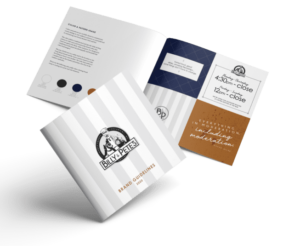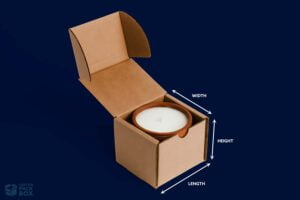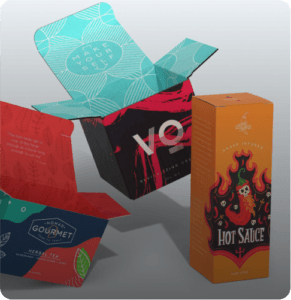Looking for strategies to stand out in a crowded market and improve client experience? Custom rigid boxes may help. These sturdy boxes offer infinite personalization options to boost your brand image and leave a lasting impact on clients.
Custom rigid boxes can match your brand identity and values. Beyond adding a logo or motto, this level of personalization lets you exhibit your product’s distinctive qualities in a way that resonates with customers. Custom rigid boxes can reinforce your brand every time someone interacts with them with the proper design.
How Custom Rigid Boxes Benefit Your Business
Customized rigid boxes can boost brand reputation and client satisfaction. Custom rigid box materials let you customize your packaging’s style, size, and form to fit your product. This makes a nice showcase and protects your merchandise throughout shipping.
Sustainability in packaging is another major consumer concern. Selecting the Perfect Material for Custom Rigid Box Packaging is crucial. Custom rigid boxes produced from eco-friendly materials lower your environmental impact and attract eco-conscious clients. Packaging made of biodegradable or recyclable materials shows you care about sustainability and waste reduction
Buying custom rigid boxes might boost brand perception. A creative, sustainable packaging design that matches your products’ needs can improve customer experience and brand recognition. When dealing with skilled professionals who can build bespoke solutions that fulfill aesthetic and functional criteria without losing quality or efficiency, designing custom rigid boxes is easy.
Concerns about cost
Cost is a consideration for brands considering custom rigid boxes. Custom rigid boxes by custom pack box cost more upfront than ordinary or flexible packing.
Due to rigid boxes’ premium materials, sophisticated production methods, and improved customization options, the initial expenditure is more.
However, considering this upfront expense in context is crucial. These boxes can provide a long-term ROI that may need clarification. The resilience of rigid boxes reduces transit damage, reducing returns and replacements.
Premium feel and unpacking can boost a product’s perceived worth, letting businesses to charge more. Outstanding packaging can boost brand loyalty, repeat purchases, and word-of-mouth recommendations.
When considering these long-term benefits, custom rigid boxes become a useful asset in a brand’s packaging strategy and justify the original cost.
Custom Rigid Box Types
Custom rigid boxes are a premium option that combines protection and elegance and reinvent the unboxing experience for consumers. These boxes present a product as well as hold it. What form factors and modifications are available for custom rigid boxes? Some frequent choices:
Boxes with two pieces: Two-piece boxes, like shoeboxes, feature a base and lid. Their simplicity and elegance make them appropriate for electronics and cosmetics.
Hinged lid boxes: The lid of a hinged lid box opens like a flap. Popular for fancy chocolates and accessories. These boxes have a sliding mechanism that lifts the product drawer out of a sleeve. Often used for tech or jewelry, they provide surprise to unwrapping.
Drawer boxes: these boxes fold flat when not in use to save space. Ideal for brands that need durability and storage flexibility, they may be readily built into a hard form.
Magnetic Closure Boxes: The flap is magnetized for a secure, inconspicuous closure. Magnets are used in premium product kits and gift boxes because they enhance luxury.
Understanding custom rigid box types allows businesses to personalize their packaging strategy to the product and audience, making each box more than just a container but a vital component of the consumer experience.
Custom Rigid Box Design: What to Consider
Adding unique rigid boxes to a brand’s packaging requires design, not just selection. A well-designed rigid box can convey a brand’s identity, engage customers, and improve the product experience. To ensure the finished product matches a brand’s vision and goals, the design process takes careful analysis and attention to many components.
Things to consider when building a rigid box:
- Dimensions and size: Choose the right box size for your merchandise first. The product should have ample space, protecting inserts, and wiggle room to avoid overcompression.
- Material Quality: Choose paperboard based on product weight and durability. Material should enhance product value and safeguard it.
- Design:brand-appropriate visuals, logos, and typography. High-resolution images reduce blurring and pixelation when printed.
- Palette: Colors influence consumer impression. Colors should match your brand and provoke the desired emotions in your audience.
- Inserts & Internal Structures: Internal compartments, foam inserts, or other structures may be needed to secure and present the product.
- Magnetic, ribbon, or lid closures and embellishments: Choose one. Luxury can be added with gold foiling, embossing, or spot UV.
- Sustainability: In an eco-conscious world, utilize recyclable materials or design the package for consumer reuse.
- Budget: It’s tempting to include every premium feature in your box, but design goals should be balanced with budget. Determine which characteristics are non-negotiable and which can be compromised without compromising brand essence.
- manufacture Timeline: If coinciding with a product launch or sales event, consider how long custom box manufacture will take.
Conclusion
Brands may develop a unique rigid box that protects their products and offers a compelling brand story to keep customers coming back by carefully assessing these elements and working with a trusted box manufacturer.














